Does that title do it well enough? Anyway. I wanted to make a little post about the behaviours Ada does in LOST TIME. Just a couple little quirks I decided to give her since, well, she’s an extinct animal after all, and I had no one-to-one example in real life to draw from!
Since Ada and the other dinosaurs in LOST TIME aren’t very anthropomorphized, I really wanted them to act and feel like real animals. They can’t speak, but modern animals make all kinds of noises to communicate with each other, so I have no doubt extinct animals did, too. All of this was entirely speculative, with little evidence in the fossils for this kind of stuff, though I did try to use what knowledge I could to inform the choices here. Or just make cute things happen.
Beak Clapping
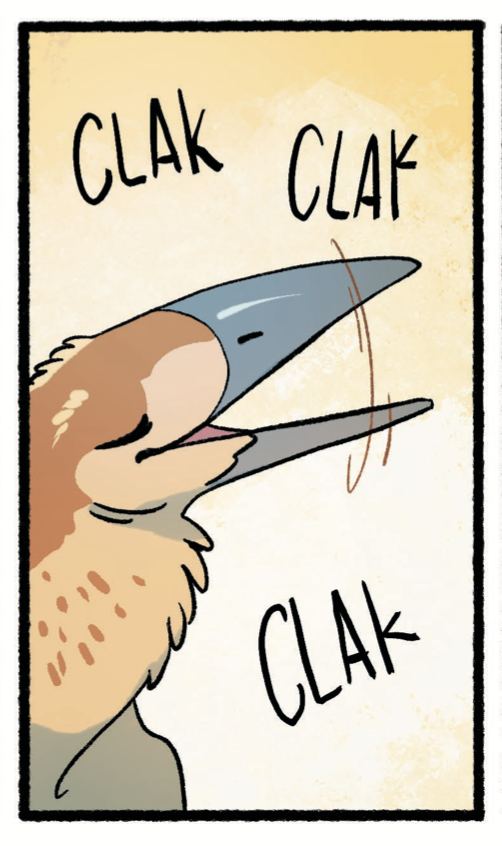
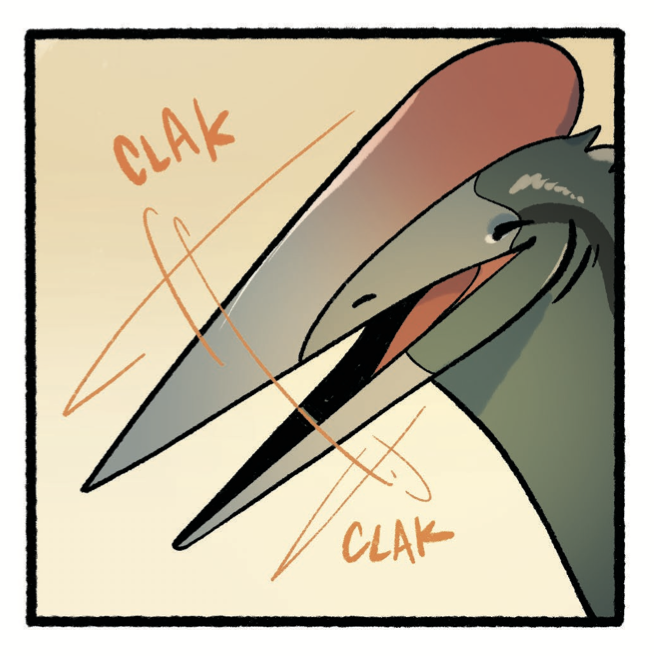
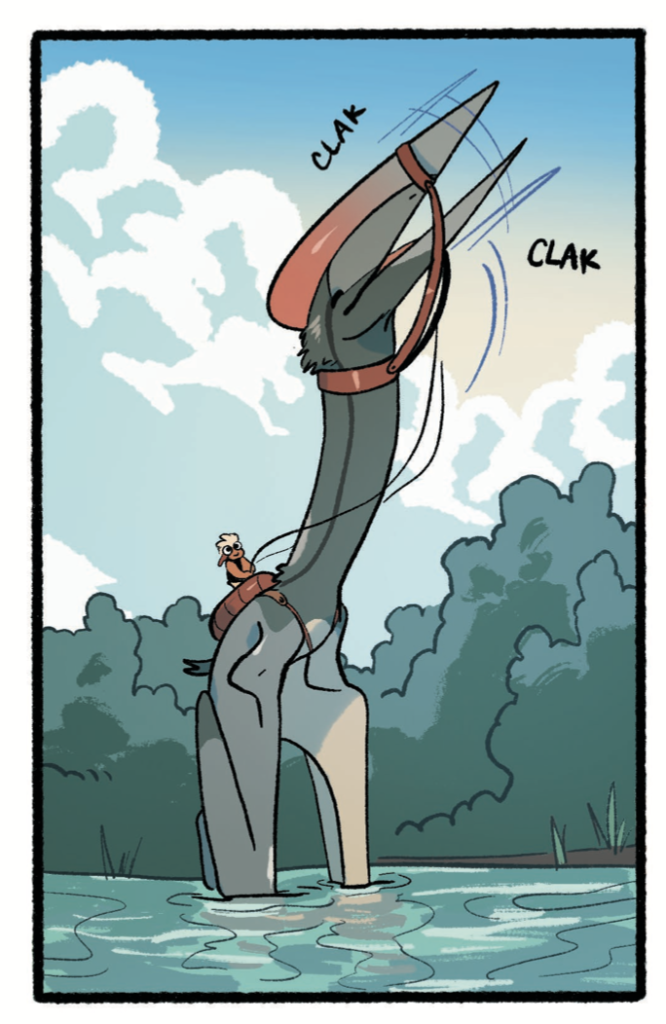
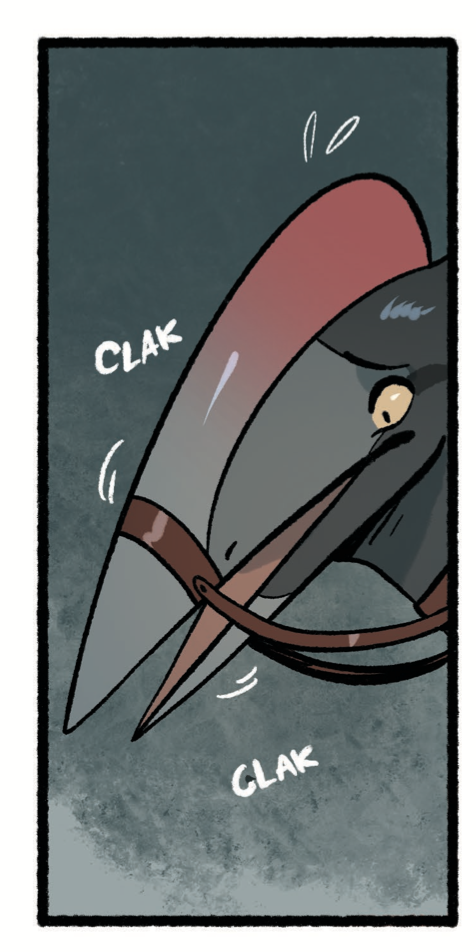
One of the noises Ada loves to make is clapping her beak together, often accompanied by the sound effect: CLAK CLAK. I imagine such a big, hollow, beaky skull would resonate quite loudly! This is a behaviour she would do mostly when excited or happy–kinda like a dog wagging its tail. She does do it sometimes when fearful or nervous, though, like a teeth chatter in humans. I always envisioned this as a comfort stim for her, expressing it loudly when she’s happy, and using it to try and calm herself when she’s upset.
I think I took this behaviour from birds, most especially shoebills which I always relate to giant pterosaurs. Please look at a shoebill and tell me this thing doesn’t have Azhdarchid vibes. These guys also clap their giant bills to make noises! Birds in general love making fun stim noises to show their excitement: chirps, beak grinding, calls, you name it. Birds are extant dinosaurs, and although pterosaurs were not dinosaurs, the two families are closely related, so I don’t think it’s a far stretch to use them to draw from them!
Bite bite bite
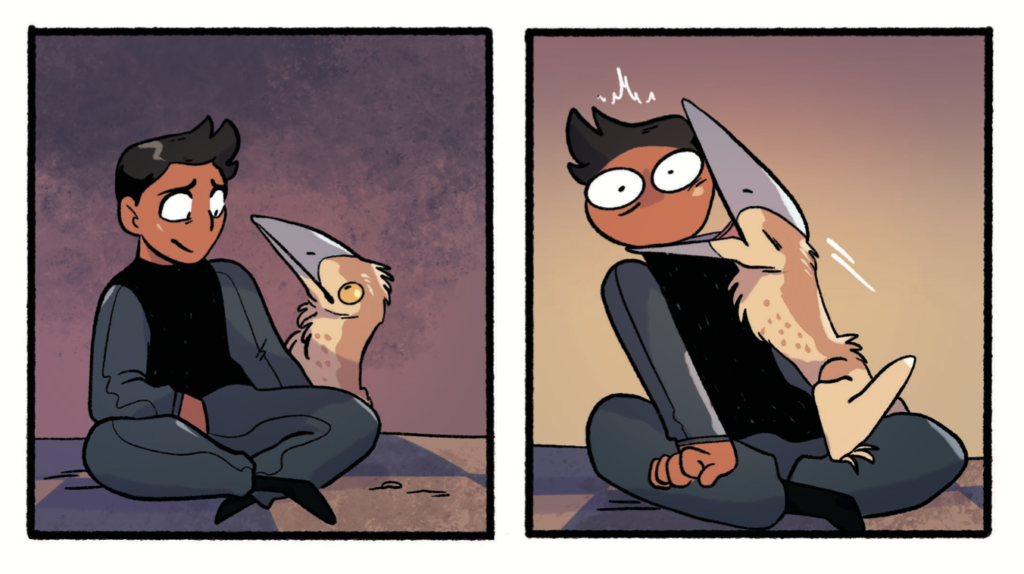
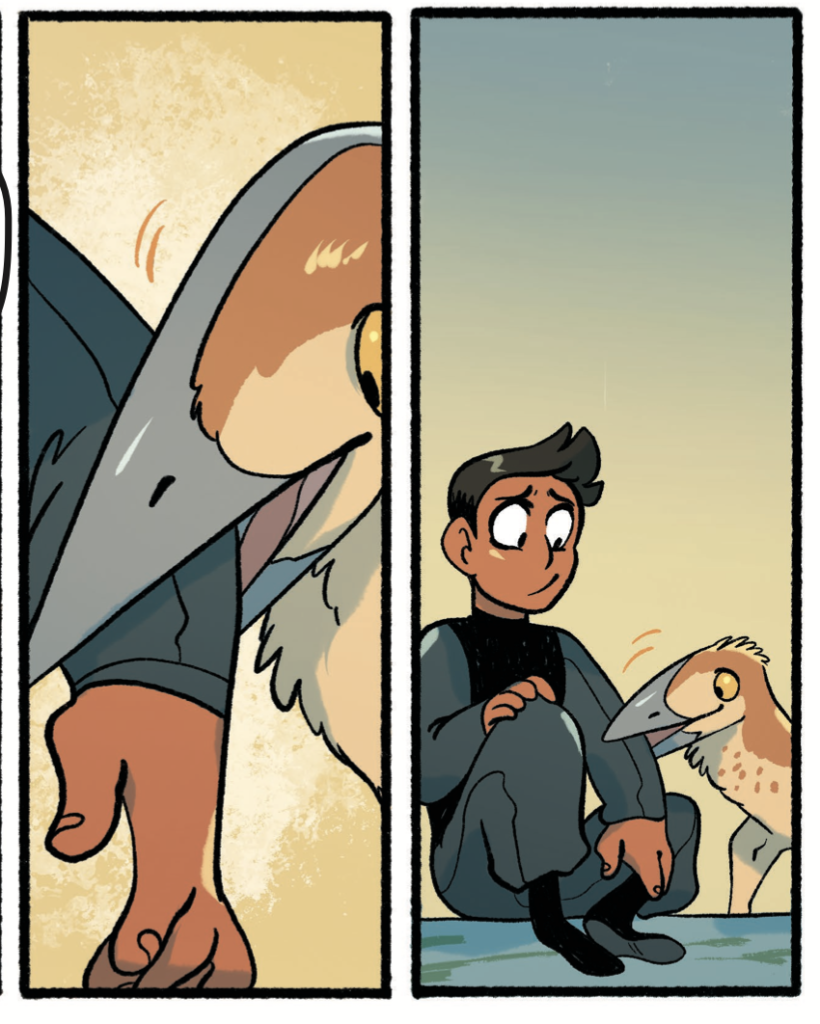
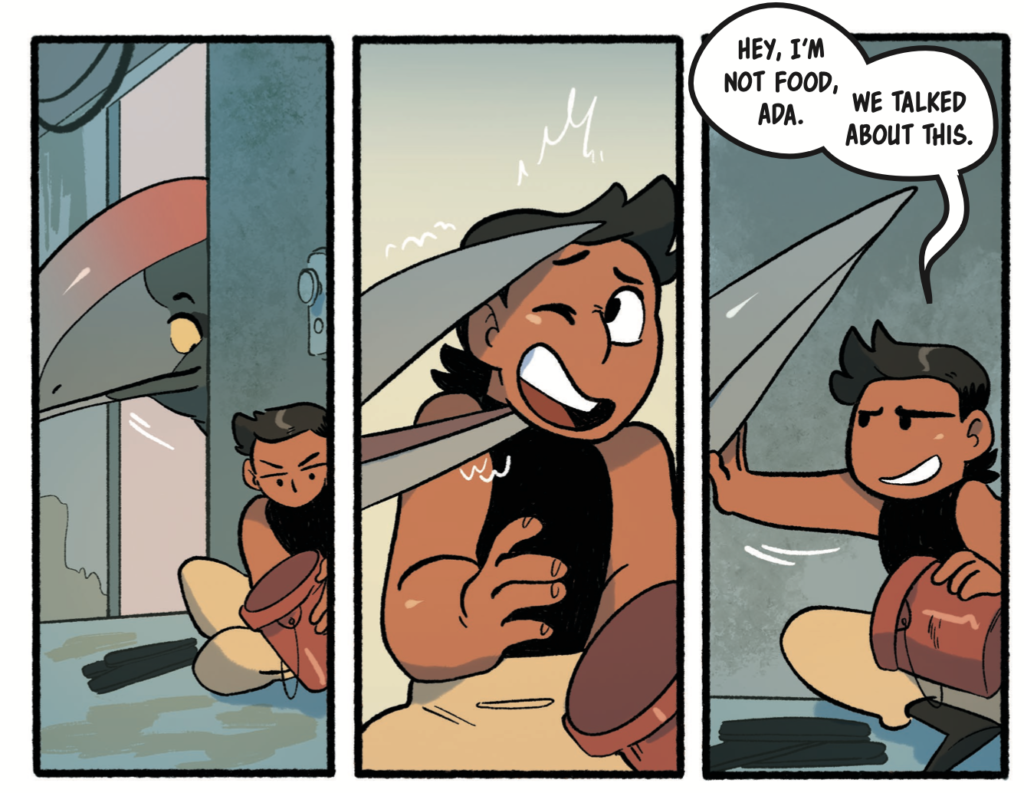
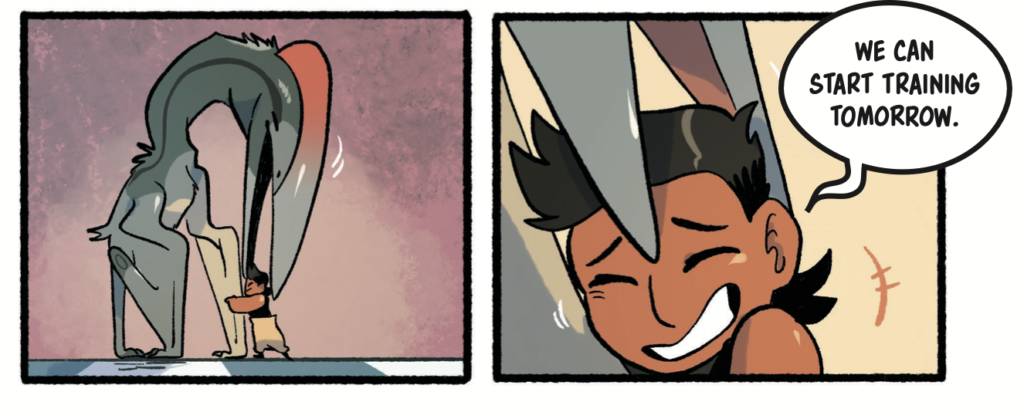
The other reoccurring behaviour I gave to Ada was biting/nibbling on Evie, most especially her head. Considering Azhdarchids were like, 90% beak, I can only imagine they mostly used their beak to explore their world. Poking, prodding, and of course, biting. I like to think that as a baby, Ada was biting at Evie to see if she was food, but as the two grew up together, it evolved into a gesture of affection, especially since Evie seems to always giggle when Ada does it.
This is taken again from birds, such as pelicans, who also use their beaks to be curious about the world. Even animals like sharks uses their mouths to explore their surroundings. Although this can look malicious, it’s not always! See, we humans have it easy–we have dexterous hands to get a feel for the world–but when all you have is a big mouth, then you just gotta use your big mouth.
Pelicans and shoebills were probably my biggest behavioural inspirations for Ada, but in hindsight, there was a lot of just birds in general in her, too. Including my own bird, a parrotlet named Rhapsody, who recently passed away after 13 long lovely years. She was not the friendliest bird, not by far (she certainly loved to use that beak to chomp), but she had so much personality in such a tiny body. Animals like her inspire me always to put character in every thing I make, even including giant giraffe-sized pterosaurs. I’ll miss her terribly.

Anyway–not to turn this cute post into something sad. I just realized halfway through writing it that I owe a lot of this to my own little bird, too. So thank you, Rhapsody. <3
And also hey–I’ve uh, revamped my site again! Hopefully for the last time in a while! Some pages might be still a bit wonky; I’ve had this site for like, several years now so it’s just gonna be like that until I have time to clean up every single one. But I’m pretty happy with this overhaul!
Thanks for reading! And a reminder that you can pick up a copy of LOST TIME directly from me and I’ll sign it! Tell me your favourite dino in the order notes and I’ll even doodle one for you!
Cheers!


Leave a Reply to Semper Cancel reply